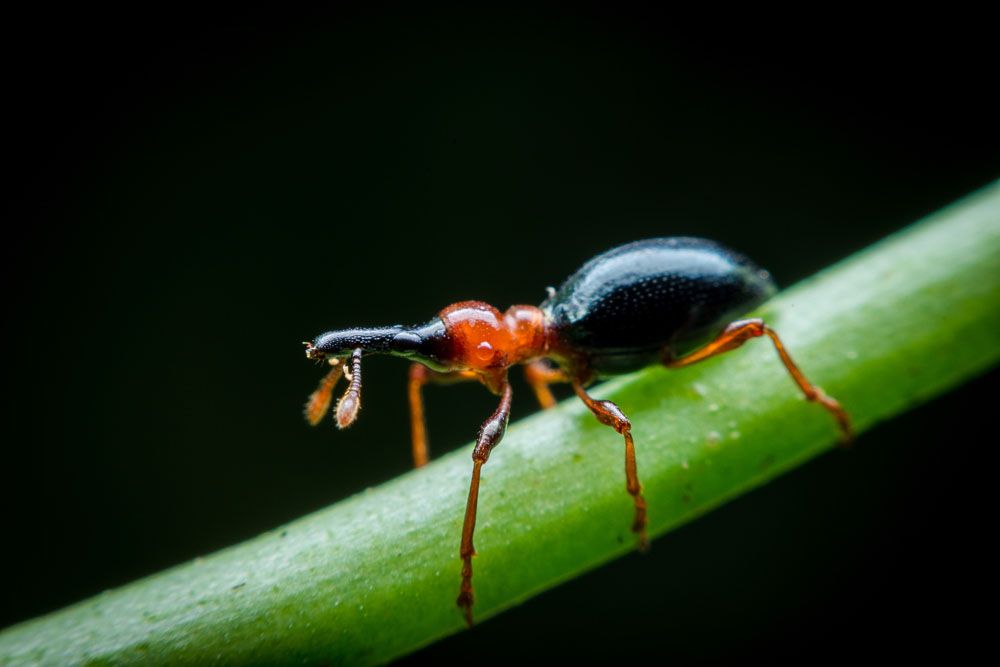
Sweetpotato Weevil – Cylas formicarius
Sweetpotato Weevil (Cylas Formicarius)
Common Name: Sweetpotato Weevil
Latin Name: Cylas formicarius
Appearance:
- The egg is round in form and cream-colored. It measures around 0.7 mm in length and 0.5 mm in breadth. The female deposits eggs in little holes formed by her mouthparts in the sweet potato root or stem. The female lays one egg at a time and seals it within the oviposition cavity with a fecal plug. The egg stage lasts from five to six days in the summer to 11 to 12 days in colder temperatures.
- The larva has no legs, is white, and has three instars. The larva normally burrows right into the plant’s tuber or stem when the egg hatches. The typical head capsule widths for instars 1 to 3 are 0.29 to 0.32 mm, 0.43 to 0.49 mm, and 0.75 to 0.78 mm, respectively. Each instar lasts 8 to 16, 12 to 21, and 35 to 56 days. Temperature is the most important element influencing the larval growth rate.
- The pupa resembles the adult in appearance, except that the head and elytra are twisted ventrally. The pupa is around 6.5 mm long. The adult larva forms a tiny pupal chamber in the tuber or stem. Initially white, the pupa develops grey coloration with darker eyes and legs during development.
- The adult emerges from the pupation site by biting a hole in the plant tissue. However, it sometimes feeds inside the tuber. The form and color are stunning. Long, slender body, legs, and head resemble an ant. Blackhead, orange-to-reddish brown antennae, thorax, and legs; metallic blue abdomen and elytra. The antennae are linked to the snout around midway. Close inspection reveals the beetle’s short hair.
